A
GEOGRAPHICAL SURVEY
OF
AFRICA
Its Rivers, Lakes, Mountains, Productions, States, Population, &c.
WITH
A MAP ON AN ENTIRELY NEW CONSTRUCTION
TO WHICH IS PREFIXED
A LETTER TO LORD JOHN RUSSELL
REGARDING
THE SLAVE TRADE
AND THE IMPROVEMENT OF AFRICA
BY
JAMES MQUEEN
First published 1840 by
FRANK CASS AND COMPANY LIMITED
Published 2013 by Routledge
2 Park Square, Milton Park, Abingdon, Oxon OX14 4RN
711 Third Avenue, New York, NY, 10017, USA
Routledge is an imprint of the Taylor & Francis Group, an informa business
ISBN 13: 978-0-714-61834-0 (hbk)
A
GEOGRAPHICAL SURVEY
OF
AFRICA,
ITS RIVERS, LAKES, MOUNTAINS, PRODUCTIONS, STATES, POPULATION, &c.
WITH
A MAP ON AN ENTIRELY NEW CONSTRUCTION.
TO WHICH IS PREFIXED,
A LETTER TO LORD JOHN RUSSELL,
REGARDING
THE SLAVE TRADE,
AND THE IMPROVEMENT OF AFRICA.
BY
JAMES MQUEEN, ESQ.
LONDON:
B. FELLOWES, LUDGATE STREET.
1840.
GENERAL CONTENTS.
PREFACE
THE very great and unexpected delay (above three months) which has taken place in engraving and bringing forward the map which accompanies this work, has enabled me to reconsider a few of the numerous authorities, and frequently not very specific or clear narratives which could alone be obtained as guides for the subsequent geographical survey of Africa, in order to make such amendments as appear to approach to a greater degree of accuracy in one or two points connected with African geography.
The first is in reference to the Travels of Wargee, pp. 111 and 112. He gives the distance from Yaoori to the Niger, at Cabra, forty-one days journey. On the fifth day he reached Karamanee, on the sixth day Cumba, where he crossed the Kowara; thence to Gourmon (the capital, of course) ten days; Gourmon to Moush, ten days; Moush to Imbolee, ten days; and Imbolee to the Niger, at Cabra, five days. The reader will perceive how accurately this distance, at 15

geographical miles per day, corresponds with the positions of Yaoori and Timbuctoo on the map drawn before his journey or authority was at all adverted to. Karamanee, mentioned by Wargee, is, I am convinced, the Karmassee of Parks guide, which he places in his narrative above Gourmon, instead of below it, mistakes which are quite common in the narratives of African travellers. Sultan Bellos map places Gourmon about N.W. from Yaoori, the territory belonging to which, in Parks day, stretched northward to the Niger. Bowditch also places it in a similar position in a route a little to the eastward of north from Yahndi, through Matchaquadee to the Niger; viz. 25 days from Yahndi to Gooroma or Gourmon, and thence 15 to the Niger. The route which Wargee took from Yaoori, crossing the Kowara at Cumba in order to proceed to Timbuctoo, together with the positions of Gourmon and other places as given by the authorities just alluded to, all go to show and to prove the high northern course and the great angle which the Niger makes amongst the mountains of Batako, approaching as nearly as possible to the course assigned to the stream by Ptolemy, and as it is rudely, but not very incorrectly, delineated by Bellos Schoolmaster. The Moush, mentioned by Wargee, is no doubt the country governed by Mouzee, (Moush and Mouzee being clearly the same, and the sovereign being frequently named after the country,) the chief who, shortly before Parks arrival in that quarter of Africa, had attacked Jinne, by embarking his troops in canoes on Lake Dibbie. The position of the place, as given by Wargee, shows that the route which Mouzee took was the most proper which he could take in order to attack that place. There is one point further worthy of remark in Wargees statement, and which is, that, between Moush and Imbolee, he crossed no water, which would go to prove, either that no such river as that stated according to the Greek text of Ptolemy, as flowing into the Niger on the south side, about 3 to the east of Cuphae or Timbuctoo, exists, or, that Wargee must have crossed it so near its source, that the diminutive nature of the stream rendered it unworthy of notice. This last is most probable. Dupuis gives the distance from Timbuctoo to Moozee 14 days S.E.
Secondly, since the subsequent pages were written, Mr. Isenberg, the gentleman referred to in p. 242 and in the Postscript, has arrived in England, and having seen him, he confirms the view I had taken of the deep bay stretching S.W. from Tadjoura. Near its opening it is about seven miles broad, from which, narrowing, it becomes not more than two miles; and then contracting to a very narrow strait, it again expands in a circular basin of about three or four miles in diameter. Mr. Isenberg crossed the bay mentioned on his return from Ancobar. Tadjoura has a fine harbour; Zeilah has none. The country around Tadjoura is mountainous, and to the north-west of it coals are stated to be abundant. In returning from Shoa, Mr. Isenberg took a route a little more to the north, that is, nearer the Hawash than the route by which he had advanced, and in this route he describes the country as still more decidedly and distinctly volcanic than he found it in his route more to the south; so much so, indeed, that in some places appearances plainly indicated that these volcanoes had, at no distant period, been in activity. Tadjoura is about 46 geographical miles NN. W. of Zeilah. All the Arab tribes on the African coast in this quarter have a friendly feeling towards England.
The travels of Ignaz Pallme have put us in possession of a few additional facts regarding Kordofan, and the parts adjacent, especially to the south. Kordofan is a delightful country, and, in many districts, not inferior to the Brazils. Vegetation, the most variegated, exhaling the sweetest odours, overspreads the low lands, while the general surface is rather flat than mountainous. Towards the west the soil is composed chiefly of loose sands. The trees in many places are very tall. Numerous singing-birds sport in their branches. There are but few rivers. The houses are circular, made of straw, and have no windows. Cattle are numerous. Two pounds of good beef do not cost so much as a penny. Oxen are used for riding. Snakes, and other reptiles, are numerous. The country is, upon the whole, unhealthy. The natives of Kordofan are in general peaceable and hospitable, but very indolent, much given to lying, and are great thieves. The reigning religion is the Mahommedan. Six days journey to the south and south-west of Obeid is the country of the Nuba, extending to the borders of the Bahr-el-Adda and the White Nile. The inhabitants are a different race from the population of Kordofan. They are Pagans, but very kind-hearted people. Their parental and filial affection is very great. The country is very mountainous: they enumerate above one hundred mountains. The nation forms a republiceach inhabited mountain has its own judge. They are a distinct race from the population inhabiting around the White Nile. The republic of Darhammar is amongst the Nuba mountains; so is Tekele, which is also a republic, but with aristocratic institutions.



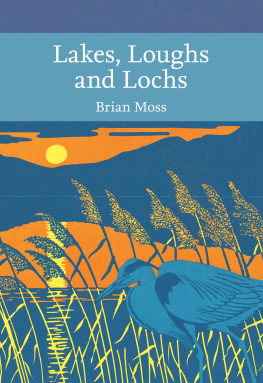
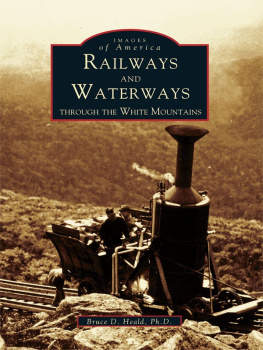
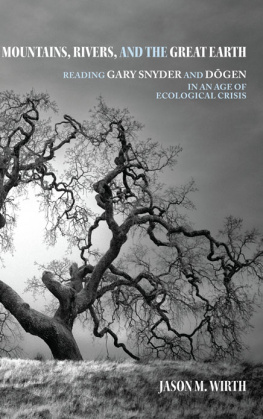
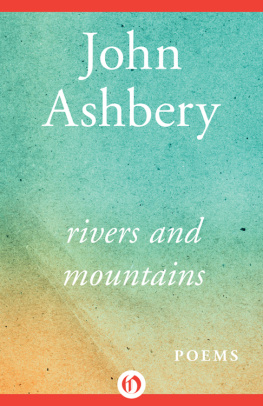
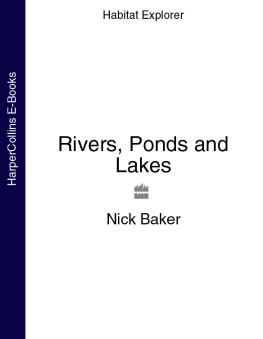
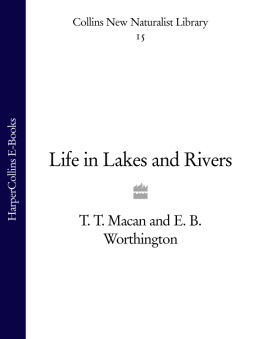





 geographical miles per day, corresponds with the positions of Yaoori and Timbuctoo on the map drawn before his journey or authority was at all adverted to. Karamanee, mentioned by Wargee, is, I am convinced, the Karmassee of Parks guide, which he places in his narrative above Gourmon, instead of below it, mistakes which are quite common in the narratives of African travellers. Sultan Bellos map places Gourmon about N.W. from Yaoori, the territory belonging to which, in Parks day, stretched northward to the Niger. Bowditch also places it in a similar position in a route a little to the eastward of north from Yahndi, through Matchaquadee to the Niger; viz. 25 days from Yahndi to Gooroma or Gourmon, and thence 15 to the Niger. The route which Wargee took from Yaoori, crossing the Kowara at Cumba in order to proceed to Timbuctoo, together with the positions of Gourmon and other places as given by the authorities just alluded to, all go to show and to prove the high northern course and the great angle which the Niger makes amongst the mountains of Batako, approaching as nearly as possible to the course assigned to the stream by Ptolemy, and as it is rudely, but not very incorrectly, delineated by Bellos Schoolmaster. The Moush, mentioned by Wargee, is no doubt the country governed by Mouzee, (Moush and Mouzee being clearly the same, and the sovereign being frequently named after the country,) the chief who, shortly before Parks arrival in that quarter of Africa, had attacked Jinne, by embarking his troops in canoes on Lake Dibbie. The position of the place, as given by Wargee, shows that the route which Mouzee took was the most proper which he could take in order to attack that place. There is one point further worthy of remark in Wargees statement, and which is, that, between Moush and Imbolee, he crossed no water, which would go to prove, either that no such river as that stated according to the Greek text of Ptolemy, as flowing into the Niger on the south side, about 3 to the east of Cuphae or Timbuctoo, exists, or, that Wargee must have crossed it so near its source, that the diminutive nature of the stream rendered it unworthy of notice. This last is most probable. Dupuis gives the distance from Timbuctoo to Moozee 14 days S.E.
geographical miles per day, corresponds with the positions of Yaoori and Timbuctoo on the map drawn before his journey or authority was at all adverted to. Karamanee, mentioned by Wargee, is, I am convinced, the Karmassee of Parks guide, which he places in his narrative above Gourmon, instead of below it, mistakes which are quite common in the narratives of African travellers. Sultan Bellos map places Gourmon about N.W. from Yaoori, the territory belonging to which, in Parks day, stretched northward to the Niger. Bowditch also places it in a similar position in a route a little to the eastward of north from Yahndi, through Matchaquadee to the Niger; viz. 25 days from Yahndi to Gooroma or Gourmon, and thence 15 to the Niger. The route which Wargee took from Yaoori, crossing the Kowara at Cumba in order to proceed to Timbuctoo, together with the positions of Gourmon and other places as given by the authorities just alluded to, all go to show and to prove the high northern course and the great angle which the Niger makes amongst the mountains of Batako, approaching as nearly as possible to the course assigned to the stream by Ptolemy, and as it is rudely, but not very incorrectly, delineated by Bellos Schoolmaster. The Moush, mentioned by Wargee, is no doubt the country governed by Mouzee, (Moush and Mouzee being clearly the same, and the sovereign being frequently named after the country,) the chief who, shortly before Parks arrival in that quarter of Africa, had attacked Jinne, by embarking his troops in canoes on Lake Dibbie. The position of the place, as given by Wargee, shows that the route which Mouzee took was the most proper which he could take in order to attack that place. There is one point further worthy of remark in Wargees statement, and which is, that, between Moush and Imbolee, he crossed no water, which would go to prove, either that no such river as that stated according to the Greek text of Ptolemy, as flowing into the Niger on the south side, about 3 to the east of Cuphae or Timbuctoo, exists, or, that Wargee must have crossed it so near its source, that the diminutive nature of the stream rendered it unworthy of notice. This last is most probable. Dupuis gives the distance from Timbuctoo to Moozee 14 days S.E.